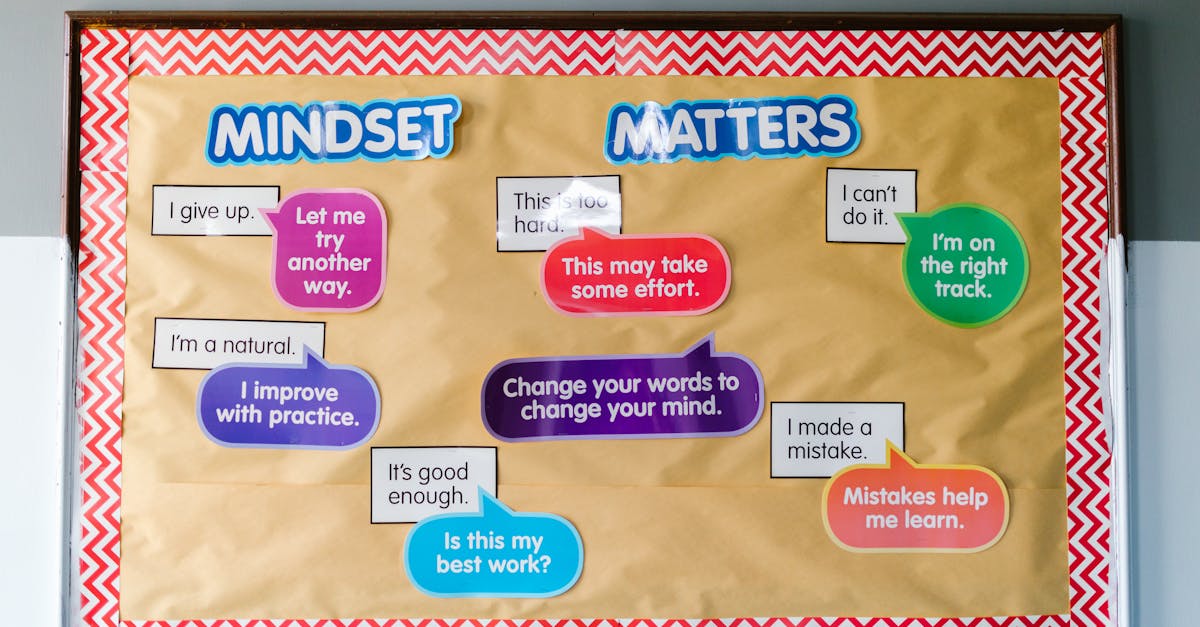In a constantly evolving professional environment, the ability to embrace a growth mindset is essential for leaders. Cultivating a mindset focused on development not only allows for facing challenges with resilience but also inspires teams towards innovation and continuous improvement. How can this transformation be encouraged in those in leadership positions? By integrating practices such as appreciating the successes of others, gratitude, and encouraging curiosity, it becomes possible to elevate their potential and energize their way of leading. A sincere commitment to lifelong learning plays a key role in this approach.

Developing a Growth Mindset in Leaders
The development of a growth mindset in leaders is essential for their personal success and that of their teams. The growth mindset, or growth mindset, founded by psychologist Carol Dweck, is based on the belief that skills and abilities can be developed over time through effort, perseverance, and continuous learning. Unlike a fixed mindset that considers talents to be innate and unchangeable, leaders with a growth mindset see every challenge as an opportunity to learn.
To cultivate this mindset, the first step is to encourage exploration and curiosity. Leaders should encourage their teams to ask questions, venture outside their comfort zones, and experiment with new ideas. This can manifest in brainstorming sessions, innovation workshops, or pilot projects where team members can test their skills in a safe environment. By creating a culture of experimentation, leaders demonstrate that failure is not an obstacle but an essential step towards success.
Another key strategy is the practice of gratitude and positive reflection. Leaders who take the time to acknowledge the contributions and successes, even modest ones, of their team foster an environment where everyone feels valued. By cultivating a climate of positivity, leaders also help their collaborators to adopt an optimistic view of the challenges ahead, thereby strengthening their desire to invest in their personal and professional development.
Mentoring and leading by example are other crucial elements in developing a growth mindset. By sharing stories of success and resilience, leaders can motivate their teams to believe in their own capabilities. Observing peers accomplish great things can serve as a powerful source of inspiration, illustrating that success is possible through hard work and learning. A good leader must therefore be a role model who embodies this growth mindset, showing that they continue to evolve and learn themselves.
Feedback is also a fundamental lever to develop this mindset. Leaders must encourage a culture of constructive feedback where exchanges are regular and welcomed with an open mind. This includes not only giving feedback on others’ work but also seeking feedback on their own performance. This approach creates an atmosphere of trust where everyone feels free to share their ideas and address their concerns, thereby promoting growth for all.
Finally, an often overlooked aspect is the importance of resilience and perseverance. Leaders must learn to overcome challenges and encourage their team to do the same. By developing stress management techniques and valuing effort, leaders strengthen not only their own growth mindset but also that of the people they lead. This can be achieved through simple techniques such as meditation, visualization, or mindfulness exercises.
By integrating these practices into their daily routine, leaders can truly transform their approach to leadership and create an environment where the growth mindset becomes the norm. These strategies promote a culture where learning, innovation, and collaboration are at the heart of every interaction, allowing every team member to thrive and contribute to collective success.

FAQ: How to Develop a Growth Mindset in Leaders
What is a growth mindset? A growth mindset is a mentality that encourages continuous learning and the belief that skills and intelligence can be developed through practice and effort.
Why is it important to have a growth mindset in leadership? A growth mindset fosters resilience, encourages innovation, and allows leaders to better manage challenges, as they see mistakes as learning opportunities.
How can a leader transition from a fixed mindset to a growth mindset? A leader can start by recognizing limiting beliefs, questioning them, and adopting a positive attitude towards challenges.
What are some examples of behaviors to adopt to develop a growth mindset? Leaders can draw inspiration from the successes of others, encourage learning within their team, and practice gratitude to reinforce trust and optimism.
How does curiosity influence the development of a growth mindset? Curiosity stimulates innovation and encourages experimentation, which is essential for a growth mindset in leadership.
What is the importance of positive reflection for a leader? Positive reflection helps maintain an optimistic attitude, which reinforces a leader’s capacity to overcome obstacles and inspire their team.
Are there specific techniques to encourage a growth mindset in teams? Yes, leaders can implement regular feedback sessions, encourage collaboration, and set SMART goals to guide and motivate their teams.
How does the practice of gratitude contribute to a growth mindset? Practicing gratitude helps focus attention on positive aspects, which boosts motivation and helps perceive challenges constructively.
What obstacles can hinder the development of a growth mindset? Fears of failure, poor emotional management, and resistance to change can be significant barriers to evolving towards a growth mindset.
How can progress towards a growth mindset be measured? Changes can be observed in attitudes towards challenges, the ability to give and receive feedback, as well as the level of engagement and motivation among teams.











